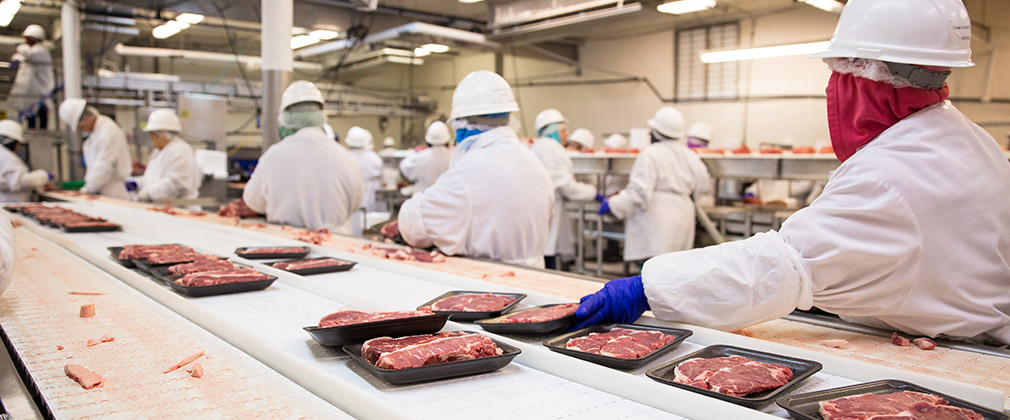Increased Line Speeds at Swine Processing Plants Adversely Affect Food Workers
Apr 16, 2025

A literature review conducted by researchers at the Johns Hopkins Center for a Livable Future describes the effects of the New Swine Inspection System on the meatpacking industry, specifically in the context of swine processing and line workers’ safety. The researchers identified that increased line speed, or the speed at which animals are processed in slaughter facilities, is associated with a lower overall wellbeing among workers, a greater risk of injury from repetitive movements, and a higher perception of injury risk.
The policy brief, titled “Policy and practice brief on the 2019 New Swine Inspection System, line speeds, and workers” was published online in the Journal of Agriculture, Food Systems, and Community Development on March 10, 2025. Before the new inspection system was implemented, swine slaughter plants followed the federal guidelines that capped their maximum line speed at 1,106 heads per hour. But in 2019 the maximum line speed was eliminated, when the US Department of Agriculture (USDA) Food and Safety Inspection Service (FSIS) introduced the Modernization of Swine Slaughter Inspection Ruling.
After this ruling, the FSIS enlisted six swine processing facilities from Illinois, Michigan, Minnesota, Nebraska, and Pennsylvania to be a part of a time-limited trial of the New Swine Inspection System. These selected facilities can increase their line speed as desired. The trial was extended four times, and on March 17, 2025, USDA announced its intent to extend the waivers and immediately start rulemaking to allow faster speeds across the board.
“The movement toward deregulating line speeds makes this worker population even more vulnerable. This decision was made without proper consideration of the impact on workers' health and without valuing the wellbeing of the people who do the hard labor of getting food to our plates,” says Kelsey Crawford, one of the authors of this study who is a MPH graduate of Johns Hopkins Bloomberg School of Public Health and earned her Certificate in Food Systems, the Environment and Public Health with the Center for a Livable Future. “The federal government needs to find ways to make these jobs safer—not more dangerous."
In recent history, the Occupational Safety and Health Administration (OSHA), which is responsible for implementing worker safety regulations in the United States, recommended that processing facilities reduce their line speeds to decrease the rates of worker injuries. But OSHA’s capacity to intervene and advocate for worker safety in this context is limited, which creates a barrier to develop policy changes to improve line worker safety. OSHA does not create specific regulations to protect workers from line speed risks like stress and injuries since the USDA is the only agency with jurisdiction over line speed regulations. Additionally, OSHA was not involved in the development of the New Swine Inspection System.
Oftentimes, these workers are exposed to dangerous conditions such as cold and slippery stations, close contact with sharp tools like saws and knives, and being denied restroom breaks. The researchers found that increasing the line speed at swine processing facilities amplifies the adverse outcomes and burdens that line workers experience. Workers reported that the faster pace makes them more vulnerable to repetitive movement injuries such as carpel tunnel syndrome and nerve issues in their hands and arms. Worker wellbeing also takes a toll from the increased line speed. Reports have shown that workers felt helpless in slowing down the line; struggled to keep up with the line speed; and faced threats by their supervisors due to underperformance, requests for breaks, and even when they experienced pain or injuries. Since many line workers are undocumented, there may be less injury reporting because of fears of deportation and retaliation from their employers.
“The fact is, working the line at a meatpacking facility is one of the most dangerous jobs in America,” says Patti Truant Anderson, one of this study’s authors and a senior program officer at the Center for a Livable Future. “Our review of the literature contributes to the evidence that working at faster speeds poses risks to workers.”
“Policy and practice brief on the 2019 New Swine Inspection System, line speeds, and workers” was co-authored by Kelsey Crawford and Patti Truant Anderson and published online in Journal of Agriculture, Food Systems, and Community Development on March 10, 2025.